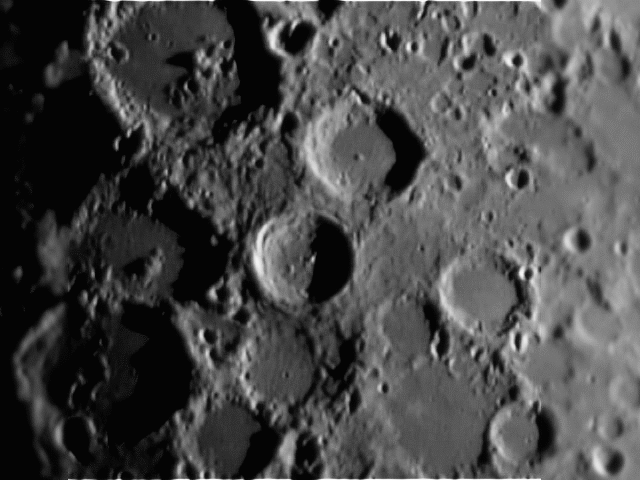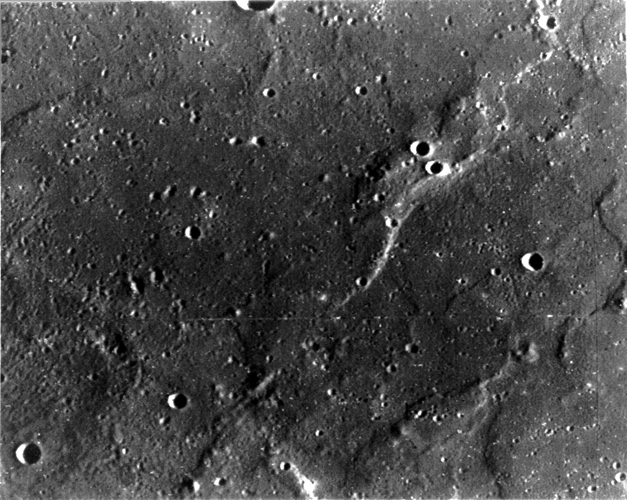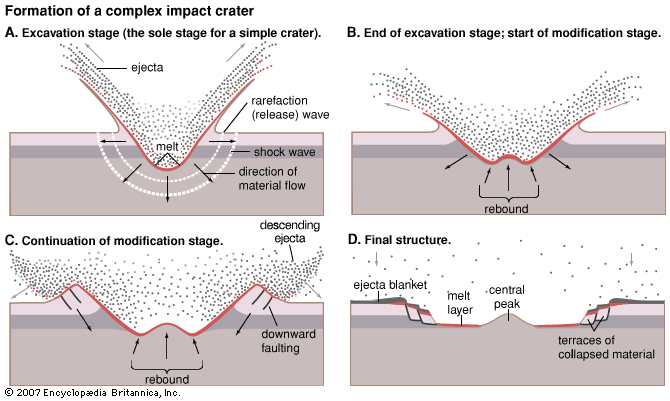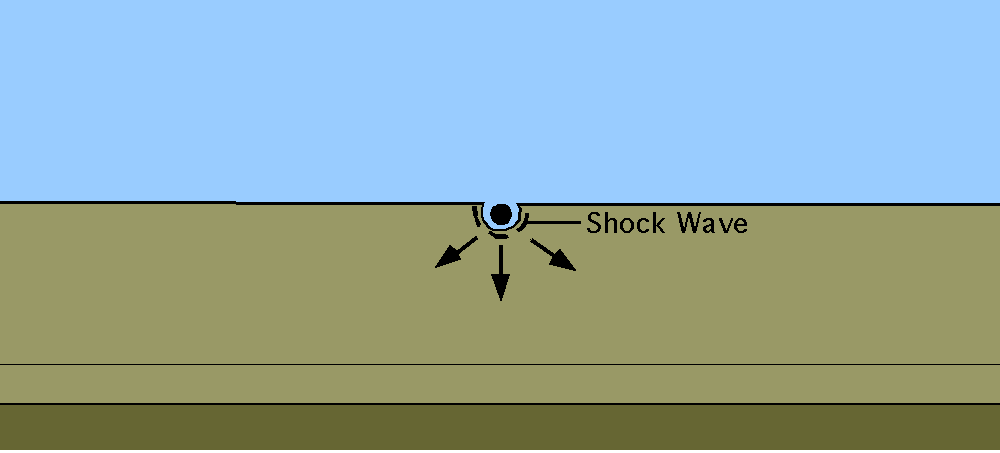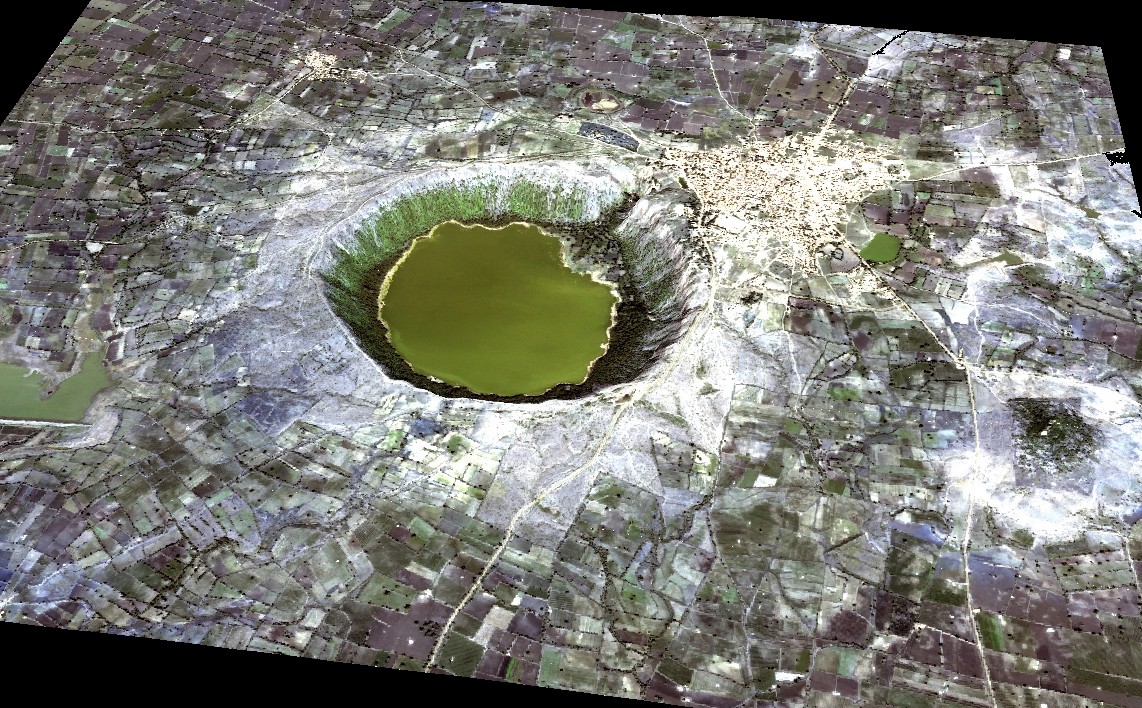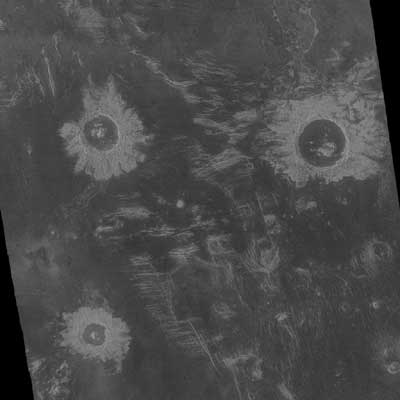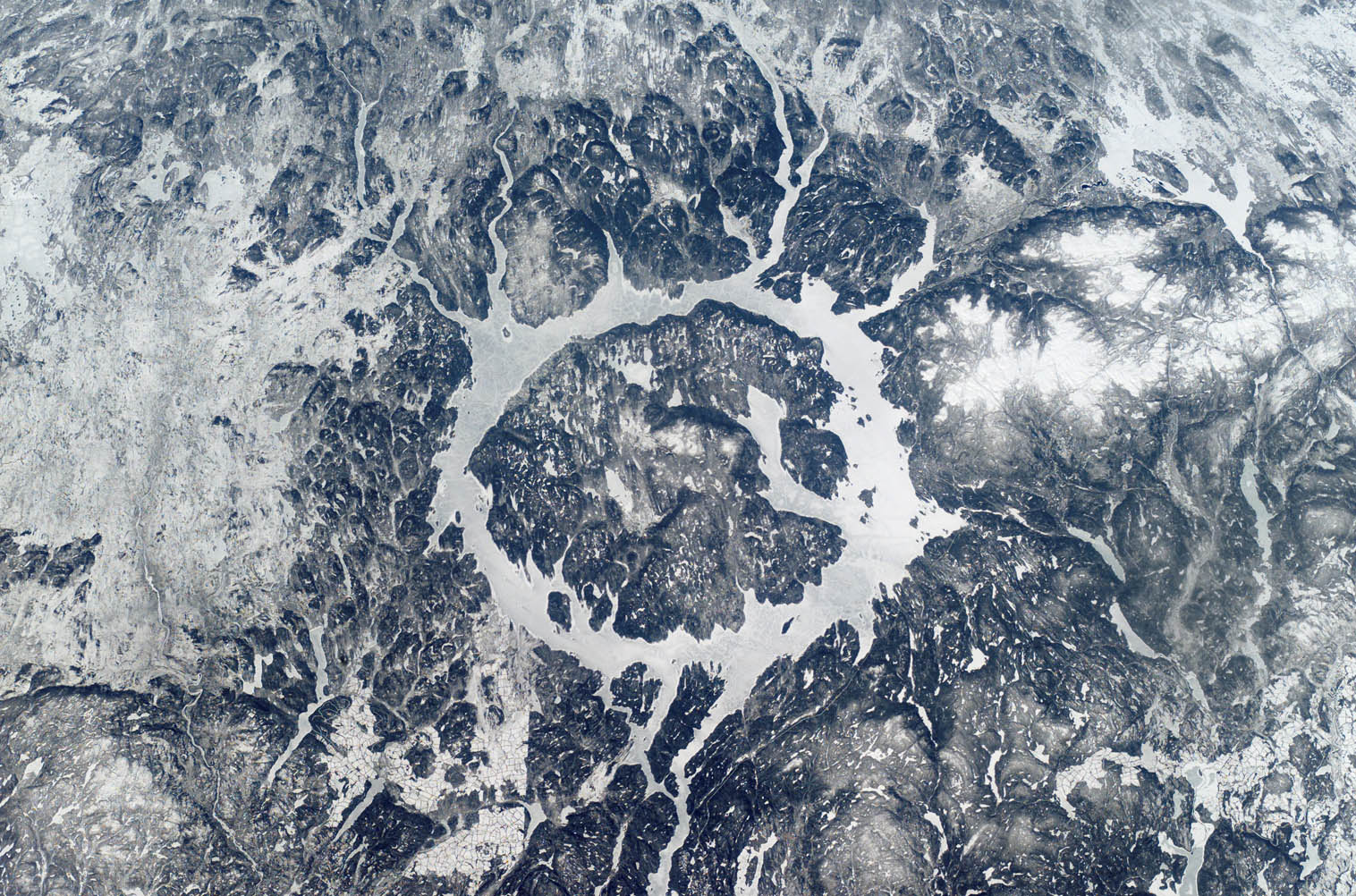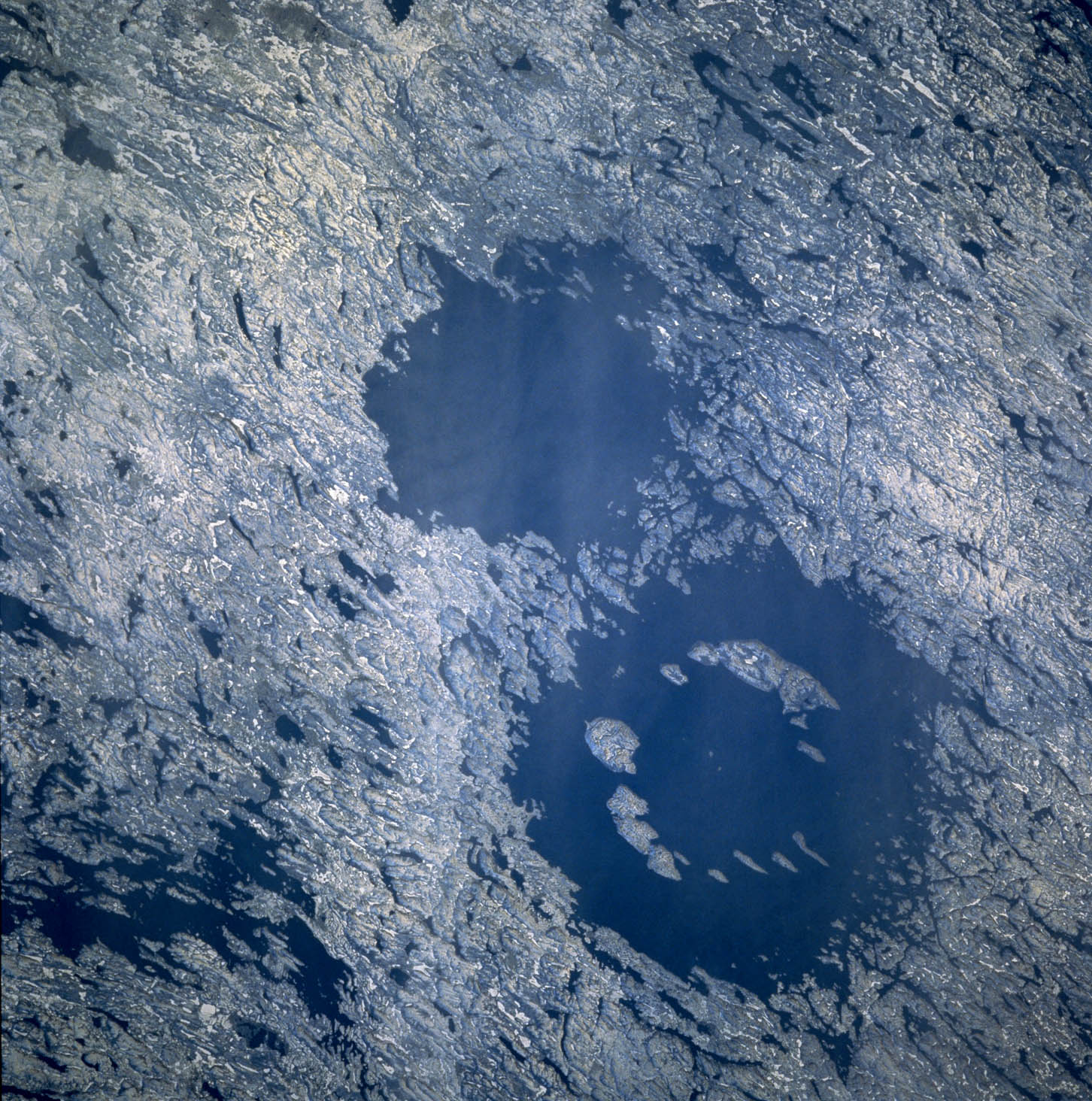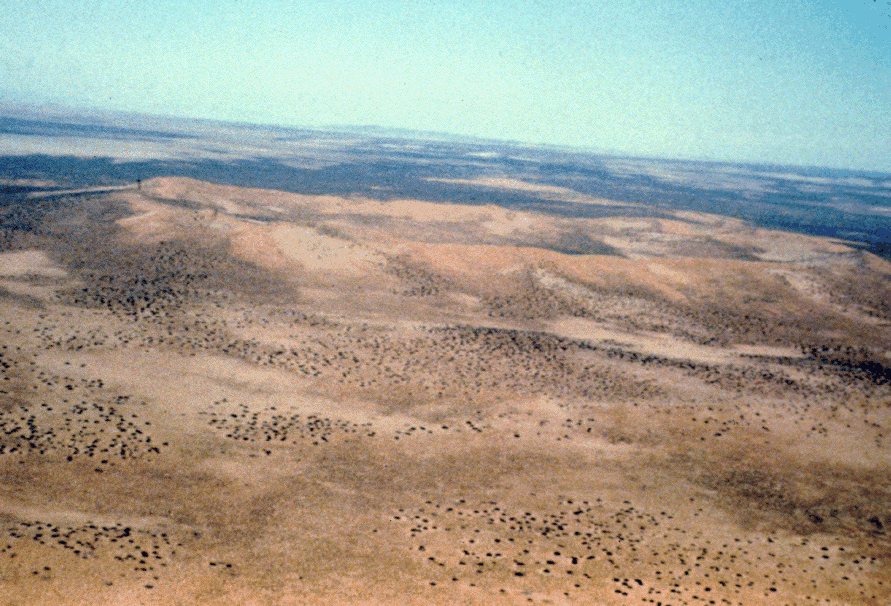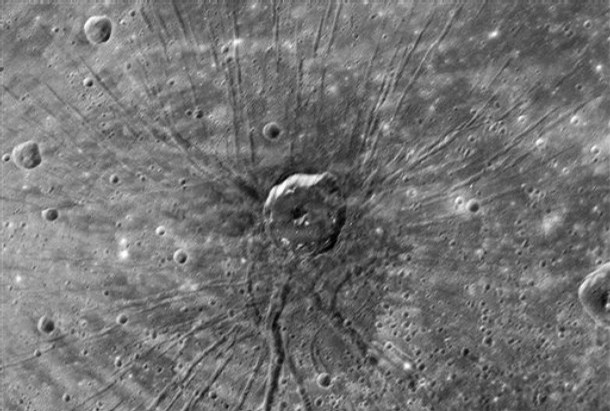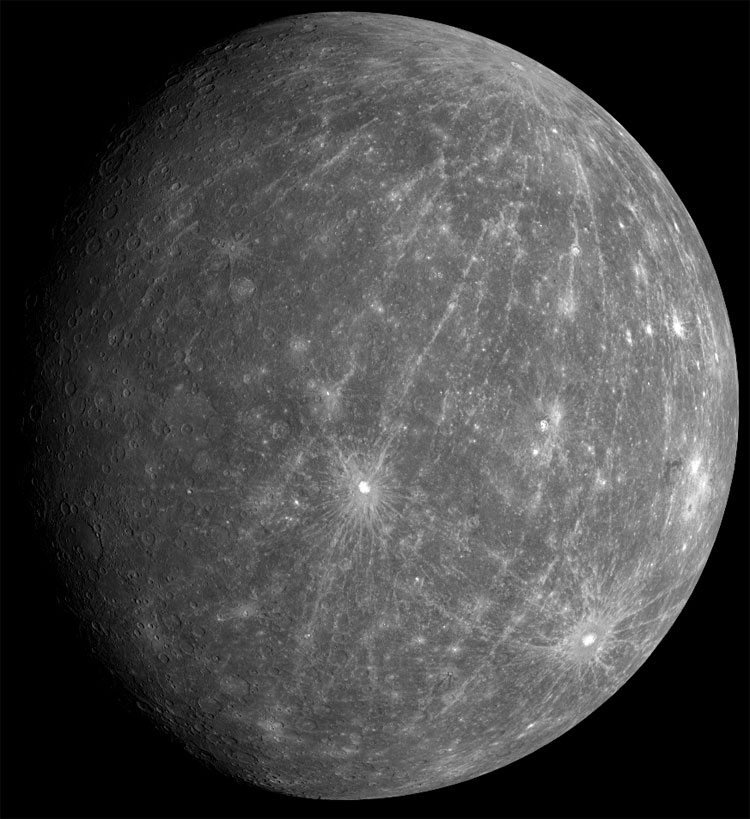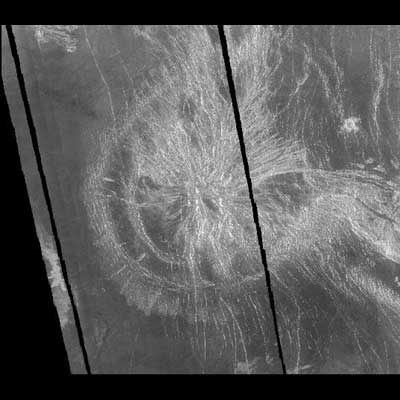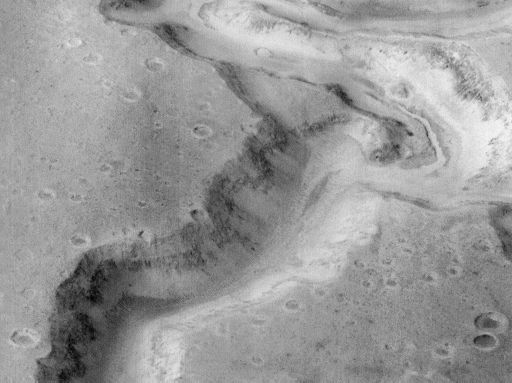Things to notice on a planetary surface
 Number and size of craters
Number and size of craters
The density or number of craters on the surface and whether or not they overlap provides insight to the inner workings and age of the surface. The term crater saturation means that the surface density of craters is so high that the next event (impact or volcanic) basically just puts a new crater on top of an old crater so the crater density has reached its physical limit.
Let's Examine A Cratering Simulation
The relative size distribution of craters on a planetary surface is also very important because taken together, the crater density and its size distribution provides insight on the relative age of a planetary surface. Saturated surfaces are significantly older than surfaces with low crater density. If a surface of a rocky planet is relatively smooth, there must be some kind of resurfacing mechanism obliterating the old craters. As we explore the planets,we will find out what these mechanisms are for each object and learn why there should be craters in the first place.
Thus the surface on the top is significantly older than the surface on the bottom in the two images below.
